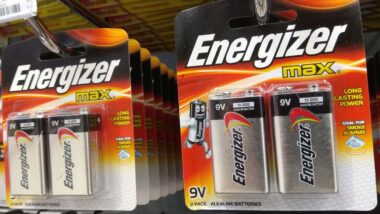Top Class Actions’s website and social media posts use affiliate links. If you make a purchase using such links, we may receive a commission, but it will not result in any additional charges to you. Please review our Affiliate Link Disclosure for more information.

New evidence now being brought up against the company for the case says that it could have changed the results of the judgment back when the case was closed in 2014.
Plaintiff Lorenze B., a resident of Wayne, New Jersey, filed the asbestos in fertilizer lawsuit against the company in 2012. Before he died in October 2012, he said that he used the product between 1967 and 1980 twice a year and it was what led to his development of mesothelioma.
Lorenze said that nearly 45 years after he began to use the Scotts fertilizer product was when he developed and became diagnosed with mesothelioma. His wife took over the case as the estate executor soon after. He was diagnosed in March 2012.
What is being alleged to have caused Lorenze’s development of cancer is the mineral vermiculite, present in Scotts Turf Builder fertilizer. It is said to have contained asbestos until 2001, according to the NAER or National Asbestos Exposure Review.
The vermiculite, a type of asbestos, was extracted from a mine located in Libby, Mont. Roughly 430,000 tons of vermiculite were extracted between 1967 and 1980.
Asbestos in Fertilizer Evidence
Through the initial trial, samples of the company’s asbestos in fertilizer product were asked to be provided by Lorenze’s attorneys. However, the company stated that they could not determine where a vermiculite sample was being produced from and when.
Moreover, since expert witnesses originated from W.R. Grace’s Zonolite vermiculite attic insulation and not Scotts fertilizer, the witnesses were barred in a judge’s motion to serve as testimony.
A separate motion for summary judgment was approved on Jan. 10, 2014, with additional findings that Scotts did in fact have 26 “vintage” samples of the asbestos in fertilizer product. According to the appeals court report, the samples were stored by attorneys in 2006 but later discovered in Spring 2014.
The samples were later presented in a separate case in 2015, with statements that the company made misrepresentations during the discovery phase during the initial trial.
A trial court decision is currently pending to confirm whether Lorenze’s lawsuit should be given additional time to file a motion because of the violations during discovery and order of summary judgment.
According to EPA records, the Libby mines contained several different kinds of asbestos. These ranged from amphibole to tremolite, actinolite, winchite, richterite, and ferro-denite. EPA records also confirm that the Scotts facility was the “single largest U.S. consumer of vermiculite ore from the Libby mines.”
According to federal agencies such as the International Agency for Research on Cancer and EPA, all forms of asbestos are carcinogenic and have the potential to cause cancer. Asbestos exposure can lead to severe conditions including mesothelioma and asbestosis.
Do YOU have a legal claim? Fill out the form on this page now for a free, immediate, and confidential case evaluation. The attorneys who work with Top Class Actions will contact you if you qualify to let you know if an individual asbestos lawsuit or asbestos class action lawsuit is best for you. [In general, asbestos mesothelioma lawsuits are filed individually by each plaintiff and are not class actions.] Hurry — statutes of limitations may apply.
ATTORNEY ADVERTISING
Top Class Actions is a Proud Member of the American Bar Association
LEGAL INFORMATION IS NOT LEGAL ADVICE
Top Class Actions Legal Statement
©2008 – 2024 Top Class Actions® LLC
Various Trademarks held by their respective owners
This website is not intended for viewing or usage by European Union citizens.
Get Help – It’s Free
Join a Free Asbestos Mesothelioma Class Action Lawsuit Investigation
If you or a loved one were exposed to asbestos and developed mesothelioma, lung cancer, or cancer in the lining of the lungs, abdomen or chest cavity, you may be able to take legal action against the companies responsible. Don’t delay – in most states the statute of limitations is two years to file an asbestos lawsuit after you’re diagnosed. Obtain a free and confidential case evaluation be filling out the form below.
An attorney will contact you if you qualify to discuss the details of your potential case at no charge to you.
Please Note: If you want to participate in this investigation, it is imperative that you reply to the law firm if they call or email you. Failing to do so may result in you not getting signed up as a client, if you qualify, or getting you dropped as a client.
Oops! We could not locate your form.












